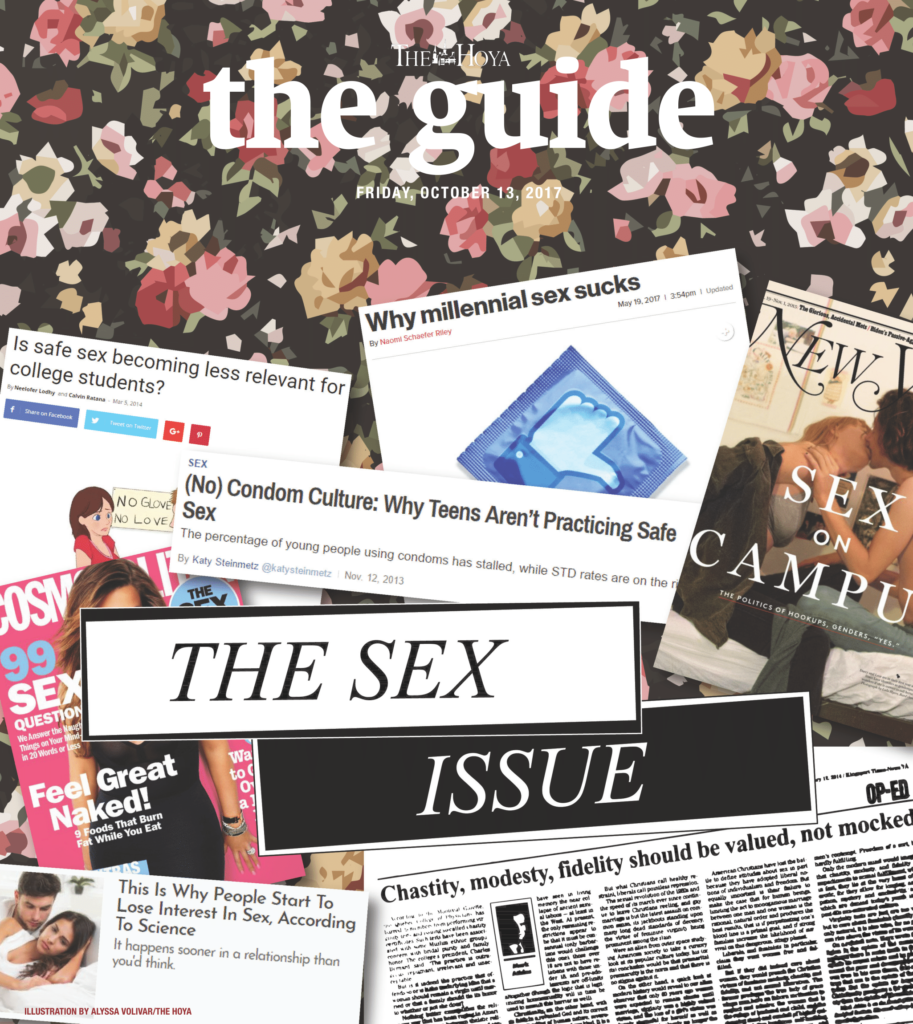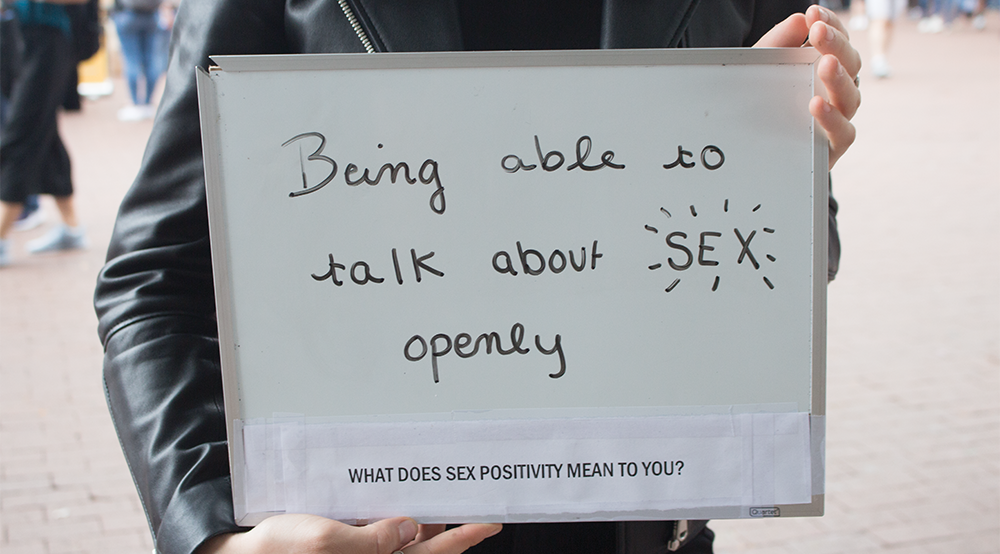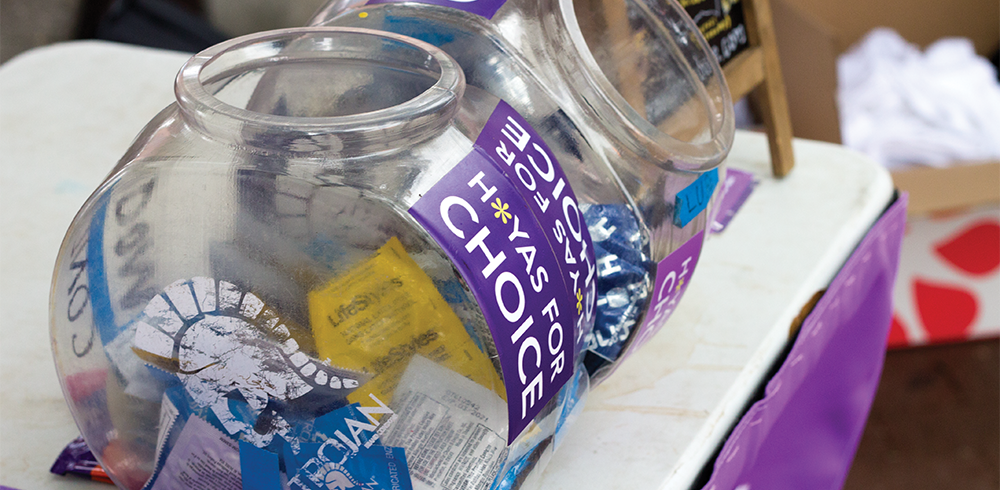
The gender divisions among men and women contributed to the double standards that exist in society today; they have created deep misunderstandings by enforcing stereotypes about each gender.
What makes a girl a “slut” and a guy a “player”? Why is the girl labelled a “bitch,” when the guy is “simply aggressive”?
These double standards exist in a society that has propagated stereotypes of submissive women and heroic men. Even today, feminists have fallen under criticism for being too assertive of their opinions.
Several Georgetown students pinned the blame on a disappointing series of gender norms that have trapped both men and women in a role that isn’t necessarily one they want to play.
“Oh, well because of stupid … gender norms. Those go so far back it’s actually ridiculous at this point. It’s that mentality that ‘boys will just be boys,’ and this is just ‘masculine’ of them. And it’s not,” Sitaara Ali (COL ’17) said.
With an obvious passion for the feminist stance, Ali urges others to reconsider heteronormative ideals.
“Because of the way that our society has somehow decided to label women, we are looked down upon for whether or not we are having sex … being with other guys … even having a lot of guy friends. It’s ridiculous,” she said.
Mackenzie Krebs (COL ’16) says that even in our attempts to reorient these standards, we end up slipping back into language that polarizes the sexes.
“A girl as the ‘slut’ and a guy as the ‘player’ is a really obvious derivative of patriarchal structures that are inherent to Western society. But, the dichotomy between the two is especially frustrating because there is no reverse,” he said. “While the intention behind ‘manslut’ is to shame men who are sexually promiscuous, it still uses a term that has historically been attributed to women — meaning that it still shames women. You’re not going to find a ‘femaleplayer’ or ‘girlplayer,’ and if there is one, then I have yet to experience it.”
The widespread institutionalization of derogatory gender words is a well-known but little-acknowledged fact.
“It’s unfortunate that that stereotype exists. I’ve seen it in my experiences, not only at Georgetown, but in our society generally,” Billy Schuette (SFS ’17) said.
Krebs also reminds us that heterosexual couples are not the only ones to implement these pigeonholed identities — they are also directed at the gay community as well.
“As far as the gay male community is concerned, from my experiences, gay men are referred to as ‘sluts’ and not ‘players.’ I’d take a gander and say that that’s the result of latent misogyny within the gay community,” he said.
Applying “slut” to a gay man is an attempt to degrade his manhood. Since he does not sleep with women, his association with the term connotes that he is not deserving of the more masculine version, “player.”
This language blocks healthy sexual discourse and therefore affects how girls see themselves as part of the community as a whole.
“As a Muslim, in general, even dating too many guys was seen as really bad. And it was always the easiest way to pick on someone you didn’t like — just say they’re a ‘slut.’ Like what are you supposed to say to that? There’s nothing you can say to that. There’s such a huge stigma against girls who want to date, or want to have fun, or who like hooking up with people,” Ali said.
Women who try to define their own sexuality cannot speak openly and comfortably about their sexual preferences without being degraded or insulted.
“Your sexual history shouldn’t have to be embarrassing, and you shouldn’t be worried that you’ve been with too many guys to end up in a good relationship in the future, but that’s something that I’ve been told by my parents — that’s just a fact. That’s what it is. However, they would never say that to my brother or another boy in our family; that’s never something that’s even occurred to them,” Ali said.
This conservative mindset extends to behavioral norms and everyday routines that take place outside of the household.
“Because I am curvier, [the stereotype] applies to me even more when people are like, ‘No, you can’t wear shorts that short,’” Jane Doyle (COL ’18) said. “Even just going to work, I have to be very conscious about what I’m wearing because I don’t want to be seen as appearing inappropriate, and, for guys, they really don’t have to think that much.”
Another gender stereotype is the widely held belief that boys are more libidinous than girls.
Doyle was quick to argue against this assumption.
“I’ve read some places that that’s, biologically, completely false. That oftentimes girls are actually a lot more into it than guys are. Guys are just a lot more vocal about it. And girls just sort of keep it to themselves,” she said.
Ali agreed with Doyle.
“Girls are horny — I’m speaking from personal experience. Everyone is horny,” she said. “We literally are programmed to want to have sex, and we are in our prime right now. So, if you’re saying that you’re not horny, maybe that’s true, but maybe [if you’re a girl] you’re just saying it because a girl saying she’s horny makes her a slut.”
Because female sexual discourse has remained taboo for so long, women tend to hide or oppress their sexual urges.
Krebs took a much different stance, disagreeing completely with the statement that males are always portrayed as the more libidinous sex.
“I don’t really think that that’s a fair thing to say because women are so frequently sexualized. While guys might be ‘horny,’ girls carry the burden of being deemed ‘seductresses’ more often than not in really unfair ways,” he said.
Today’s media has sexualized women and men to an extreme. Women in commercials eat fast food while barely clothed, and almost every female model is shaven, young and edited to look like a real-life Barbie doll. Likewise, men in the media are formed to fulfill masculine roles, complete with an airbrushed six pack or crisp business suit, well-kept hair or slight stubble, and rugged props or expensive watches.
These gender divisions are apparent in how we think about aggressive women versus aggressive men. More often than not, a woman who asserts her authority in a position of power is disliked and put down, whereas her male counterpart is celebrated for his leadership.
Sitaara described a personal anecdote in which her debate coach offered her an unforgettable piece of advice.
“He was like, ‘This sucks, but you can’t be too aggressive where a guy can be because where he comes off as aggressive and powerful, you come off as a bitch,’” she recounted.
However, this critical pendulum swings both ways. Being aggressive in a sexual or romantic context has a completely different meaning.
Schuette argues that while aggressive women are more desirable, aggressive men are often ostracized by women.
“I’ve seen aggressive guys almost always getting shut down, like, ‘He’s coming on way too strong,’” Schuette said. “But aggressive girls, a lot of guys would be like, ‘Oh, wow.’ You can tell what she wants, and it works out in her favor.”
This female aggressiveness can be appealing, but often only to an extent. The pendulum can just as easily come crashing back again, and there is a fine line between acceptable versus unacceptable behaviors of dominant women.
“If there’s a girl who’s actively pursuing a guy and is the first one to initiate conversations or is asking to hang out all the time, then she’s being clingy, or she’s being kind of crazy and desperate,” Doyle said. “I think both [stereotyped sides] have negative connotations, but I feel like guys don’t get put down so much [as] they just get rejected for it.”
Gendered double standards affect the way men and women see themselves and each other. They have created deep chasms between not only heterosexual people, but also between those in gay communities. They have propagated misunderstanding and conflict in the most intimate settings. But, more and more people are beginning to come forward to share their stories and find common ground. To combat these stereotypes, it is important that our community recognize that they exist and a discussion surrounding them begins.














